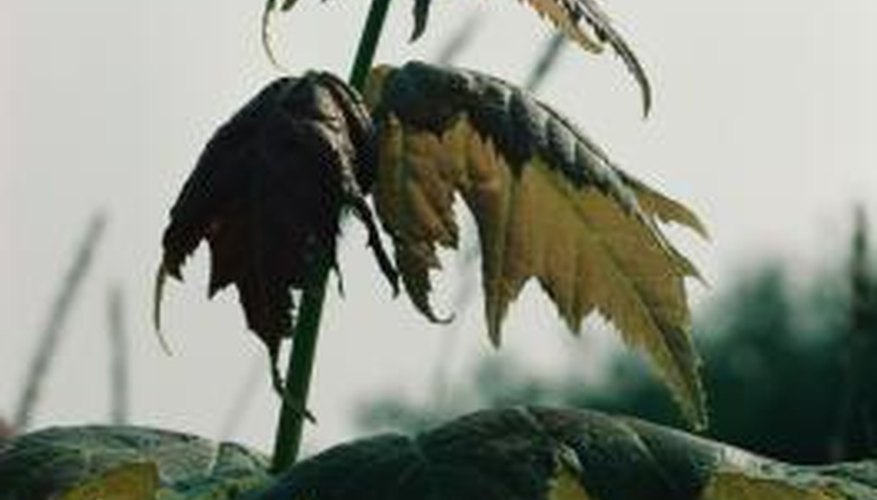Saplings are trees that are just starting to grow. Just as with mature trees, saplings can be identified by noting their details. Although it's typically a sapling's leaves that are the primary key in identifying it, the leaves are only one part of a sapling. Other parts, such as buds and twigs, are also used in identifying tree saplings. However, because saplings are not mature trees, they can be harder to identify than older trees.
Size
Although they're usually small, saplings can vary in age from only a few years old to 30 years of age or more. They're smaller than trees located under a canopy or sub-canopy, although they're older than seedling trees, as they have passed a crucial phase of their growth. A hardwood forest may contain as many as 300 saplings per hectare (equal to 100 acres), notes the University of Minnesota.
Leaf Type and Arrangement
If a sapling has simple leaves that grow opposite each other, it's likely to be an ash, a lilac or a dogwood tree. Saplings with simple leaves that grow on twigs alternately include birches, poplars and willows. Saplings with compound leaves positioned opposite each other on twigs include ash and buckeye trees. Saplings with compound leaves that grow alternately on a twig include walnut and locust trees.
- If a sapling has simple leaves that grow opposite each other, it's likely to be an ash, a lilac or a dogwood tree.
- Saplings with compound leaves that grow alternately on a twig include walnut and locust trees.
Leaf Shape
The shape of a sapling's leaves helps determine the type of tree. For example, heart-shaped leaves are found on redbud saplings. Water oak saplings have spatula-shaped leaves, while southern red oak leaves are bell-shaped. Linear leaves are found on willow oaks, and cottonwood saplings have triangular-shaped leaves. Sweetgum saplings are known for their star-shaped leaves, while red mulberries have mitten-shaped leaves. Magnolia leaves are oblong and dogwood leaves are oval.
- The shape of a sapling's leaves helps determine the type of tree.
- Linear leaves are found on willow oaks, and cottonwood saplings have triangular-shaped leaves.
Buds
Buds also grow on either opposite or alternate sides of twigs, which is useful in identifying a tree sapling in winter, when trees have lost their leaves. Sugar maple saplings have extremely pointed buds. Different saplings also have various sizes, shapes and face patterns of bud scars. Saplings such as butternuts, walnuts, ashes and hickories have larger bud scars than most trees.
- Buds also grow on either opposite or alternate sides of twigs, which is useful in identifying a tree sapling in winter, when trees have lost their leaves.
- Saplings such as butternuts, walnuts, ashes and hickories have larger bud scars than most trees.
Considerations
Consider the colour of a sapling's twigs and if the twigs are shiny or dull. For example, the twigs of box elder saplings are purplish. Some twigs are hairy, while others are smooth. Because most trees have bark that changes in appearance with age, it can be hard to identify a sapling by its bark. On the other hand, some saplings are easy to identify from their bark, such as aspens, birches and American elms.
- Consider the colour of a sapling's twigs and if the twigs are shiny or dull.
- Because most trees have bark that changes in appearance with age, it can be hard to identify a sapling by its bark.
